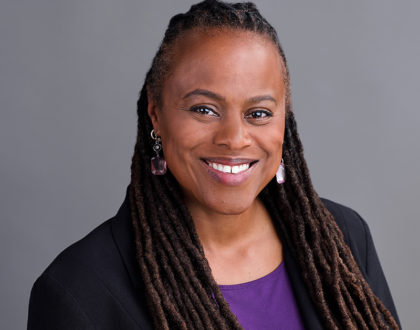5 minutes with … Beth Chandler, CEO of YW Boston

Beth Chandler was named President and CEO of YW Boston last summer after having joined the nonprofit organization in the fall of 2012. She’s worked in organizations focused on urban public and charter schools, civil legal aid programs and affordable housing and community development. A former professional basketball player, Beth received her undergraduate degree from Harvard University and an MBA from Columbia Business School. The Business Journal recently asked Chandler the following questions on the topic of race, diversity, and leadership in Boston.
You have now been at the helm of YW Boston for over a year since taking over in an interim role in late 2017, after the passing of Sylvia Ferrell-Jones. What has been the hardest challenge in filling the shoes of someone who was so widely respected?
As I often say, if I try to fill Sylvia’s shoes, I will fail spectacularly. Sylvia was such an inspiration and role model to so many people, including me. One of the hardest challenges is leading in a way that is authentic to me since my style is different from Sylvia’s.
It’s not like you were new to leadership yourself — how much of YW’s shift in strategy over the past year was dictated by external changes like #MeToo or news coverage of racism in Boston versus internal changes, such as your coming on board as CEO?
The board approved the strategic-planning process in the summer of 2017 before Sylvia retired. The decision stemmed from wanting to have a clearer message and greater impact in Boston regarding issues of racial and gender inequity. At the time, our program portfolio had six programs that all served different audiences and resulted in different outcomes. Organizationally, we wanted a tighter focus.
YW Boston runs programs like LeadBoston and InIt — where are you seeing the most interest, the most growth? Young people? Businesspeople?
Great question. We are actually seeing the most interest from all sectors for our Dialogues on Race and Ethnicity program and workshops. People are interested in the Dialogues (program) because it’s an innovative approach to a problem they’ve been wrestling with for a while. It helps organizations create the necessary cultural shift that will support inclusive policies and practices. It includes facilitated conversations around race, but also incorporates recurring assessments that support the development and implementation of a customized action plan that can drive individual and organizational change. It’s a lot more action and data-oriented than the name suggests. We’re also seeing tremendous interest in our executive-leadership program, LeadBoston. Next year, we will spend more time equipping participants with tools and skills so that they can be internal change agents for racial and gender equity. The program will continue to highlight challenges in Boston that any leader will need to grapple with to be successful and bring in top leaders and academics to share their perspectives.
When you played basketball for Harvard, you suffered an injury that would have ended the careers of most athletes. You went on the play professionally. How were you able to come back from that?
There were two reasons I chose to have ACL surgery. First, my knee was very unstable after the injury. I couldn’t imagine spending the rest of my life wondering when my knee might give out again. So, part of the decision was for quality of life. The second reason was that I was furious with the orthopedic surgeon. Several male ice hockey players had torn their ACL and were back on the ice six months later. When I met with the surgeon, he encouraged me to forgo the surgery and give up playing, because there weren’t many professional basketball opportunities for women at the time. It was a pretty sexist thing to say. Playing Division I basketball at Harvard was a tremendous opportunity, and one that I really enjoyed. Why stop playing if there was a surgery that would allow me to get back on the court? Being able to prove him wrong was a great motivator during the grueling nine months of rehab.
You serve on the city’s Women’s Workforce Advisory Council, to help close gender pay gaps. What’s harder — getting businesses to solve racial diversity challenges or gender-pay equity challenges?
Wow, this is a great question. I think businesses have an easier time thinking about addressing gender equity than they do racial equity. I think people are less comfortable talking about race than they are gender. The data shows that there is still a long way to go for both, though.
With the unemployment so low and the war for talent so high, what is the one message Boston businesses need to hear when it comes to race and diversity?
Studies have found that millennials of color, in particular, cite unfair treatment as a turnover factor almost twice as much as a better job offer. Organizations will win the war for talent and generate better returns for investors, shareholders or donors if they create more racially diverse and inclusive work environments. It will require hard work and intentional commitment, yet data shows that the return will be worth it.
Find the original article on the Boston Business Journal’s website.
